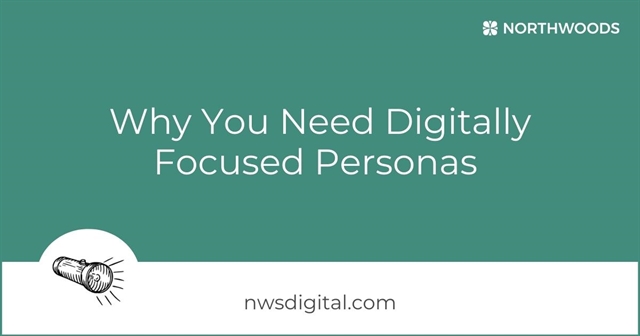By Katelyn Goerke
April 28, 2021
5 Minute Read
Years ago, marketing was about one thing: Broadcasting your brand’s unified message to the largest possible audience. It involved broad-distribution print, billboards, radio and television. Targeting existed, but in wide swaths, such as Esquire readers vs. Glamour readers.
Those media still matter, but not as much as in the past. The transition to digital marketing has led to ever more personalized appeals, through digital advertising, email marketing, social media marketing and SEO. Digital campaigns aim at the needs, desires and pain points of specific, well-defined target audiences.
These highly targeted campaigns require more audience data than the broader marketing of the past. To convert your specific audience, you must first know exactly who they are. User research, through means ranging from surveys and interviews to simply observing how users interact with your brand in the digital setting, is crucial to designing campaigns that hit the bullseye.
Types of Audience Targeting Strategy
Demographic Audience Targeting
Demographic targeting is the most straightforward method and a good starting point for beginners in target marketing, because most organizations have prior knowledge of customer demographics. Demographic campaigns create messaging around such factors as:
- Age
- Gender
- Income
- Job Position (such as sales manager or CEO)
- Job Industry (such as manufacturing or ecommerce)
Location-Based Audience Targeting
- Are the users I would like to reach local? National? International?
- Are the products and services I sell only available in certain areas?
- If I am promoting an event, where is it taking place? Will people be willing to travel to attend?
- Am I trying to reach new potential customers in an expansion area, or am I bolstering brand loyalty in a mature market region?
Such questions can narrow the scope of your target audience within a given location.
Audience Targeting by Channel
Your user segments likely favor particular channels and methods of communication when they interact with you. Some might prefer to get news from you via social media. Others might prefer email. You can get even more granular within social media; your audience on LinkedIn could differ markedly from your Twitter followers.
Interest-Based Audience Targeting
Interest-based targeting is time-honored practice – fashion houses have advertised in Vogue since the beginning of time. But this strategy adapts well to the digital age.
The simplest interests to target relate directly to your industry. Say you are promoting your services as a travel agent. You would target users with a demonstrable interest in travel – visitors to travel websites or, more narrowly, sites promoting vacation regions where your company has special expertise. Sponsored posts in social media groups focused on travel are also obvious plays to reach an audience interested in your adjacent services.
But think beyond the obvious. Your audience isn’t one dimensional. They have interests and concerns outside those that directly relate to your products or services. Say your travel agency specializes trips to the tropics. You may also want to target audiences interested in beaches, sunbathing, aquatic sports and other activities associated with tropical locations. While those users may not be interested in travel per se, they may want to travel to the locations that you service.
The Lookalike Audience Tactic
If a significant, definable audience currently engages with you on a regular basis, use what you know about that audience to create and reach new audiences that resemble your current fans.
This lookalike approach is powerful in digital advertising. An advertising platform will look at the common user attributes within the list that you provide. It will seek new users who share those attributes and target them on the basis of that commonality. In other words, the ad platforms match you with people who are very much like the people who already enjoy your company.
How to Find Your Target Audience
All the strategies outlined above require audience data. Without it, your campaigns will likely fall flat. It bears repeating: If you don’t know your audience, you can’t create content (not to mention products) that meets their needs and soothes their pain.
Audience data collection methods are many and varied, but the two below are key and can get you started on a sound footing.
Analyze Your Current Data
First, take a good look at the marketing systems you now use. What connections and patterns do you see? Perhaps it turns out that your LinkedIn followers always respond well when you post content about one product, but your Facebook audience never engages with the same content. You might note that your audience in, say, Illinois asks more or different questions than your audience California.
In addition to data from your marketing channels and website, gather data from other sources within your organization. Ask your sales team about support requests or common requests from their clients and prospects. These items can guide you to additional content topics or to expand on more popular topics. Relevant, useful content both solidifies your current audience and attracts new audience.
Deep data dives can yield surprises and reveal opportunity. Take the time to digest as much as you can from your current data and identify patterns that can drive your strategy going forward.
Gather User Data
Conduct new research to fill gaps in your current data. Some especially powerful user data – notably, information about user interests and pain points – might lie beyond what you can gather from your current marketing channels.
User surveys can help a great deal, here. Once you’ve identified the information gaps, craft a survey that targets them and then distribute it to your users. Personal interviews and focus groups allow you to probe deeper into user issues.
Do It Right
Personalized marketing works.
But you must do it well. Today’s skeptical digital users, constantly bombarded by advertisements and content from sources throughout the web, will ignore you – unless you invest in creating exactly the right messages that relate to your target audiences.
A solid audience targeting strategy based on real user data will ensure that your marketing messages break through the clutter and achieve positive ROI and digital success.
If you need assistance with your digital marketing, advertising or targeting efforts, don't hesitate to contact us. We're happy to help!
Related Blog Posts
Email marketing is a critical form of communication between companies and consumers, especially right now. But, how do you get recipients to open your emails and answer your calls to action? Start with these four personalization tactics.

Understanding your target audience is more important in marketing today than ever before. But audience data and personas are only useful if they're developed with your digital tactics in mind. Here's why the best personas are developed using data.

Today’s digital marketers must collect and analyze a significant amount of data. How does a marketer begin to make sense of it all? Data visualization! Here’s how to get started.